Figure shows the graph of pressure versus volume of an ideal gas, taken from state A to C via three different paths, i.e., ABC, AC and ADC. The internal energies of the gas corresponding to the states A and C are (P0V0)and(5P0V0) respectively. Determine
The total heat energy supplied to the system, during each Pressure of three processes ABC,AC and ADC.
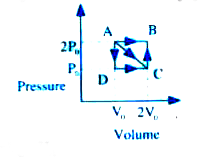 Solution in Telugu
Solution in Telugu
Applying, the first law of thermodynamics, to the process : ABC
from ΔQ=ΔV+ΔW=4P0V0+2P0(2V0−V0)=6P0V0
For AC, from ΔQ=ΔV+ΔW
=4P0V0+12[2P0+p0]×(2V0−V0)=5.5P0V0
ADC, we have ΔQ=ΔV+ΔW=4P0V0+P0(2V0–V0)=−5P0V0
Topper's Solved these Questions
- BOOK - AAKASH SERIESCHAPTER - THERMODYNAMICSEXERCISE - TEST YOUR SELF17videos
THERMODYNAMICS
- BOOK - AAKASH SERIESCHAPTER - THERMODYNAMICSEXERCISE - SHORT ANSWER TYPE QUESTIONS8videos
THERMODYNAMICS
- BOOK - AAKASH SERIESCHAPTER - THERMODYNAMICSEXERCISE - ADDITIONAL PRACTICE EXERCISE (PRACTICE SHEET ((ADVANCED) INTEGER/SUBJECTIVE TYPE QUESTIONS))11videos
THERMODYNAMICS
- BOOK - AAKASH SERIESCHAPTER - THERMAL PROPERTIES OF MATTEREXERCISE - ADDITIONAL PRACTICE EXERCISE (LEVEL - II) PRACTICE SHEET (ADVANCED) Integer/Subjective Type Questions2videos
THERMAL PROPERTIES OF MATTER
- BOOK - AAKASH SERIESCHAPTER - THERMOMETRY EXERCISE - Numerical Exercise (LEVEL- 1)11videos
THERMOMETRY
Similar Questions
Should a quais-static process be reversible?
08:38View SolutionDefine two principal specific heats of a gas . Which is greater and why ?
03:55View SolutionA cylinder of ideal gas is closed by an 8 kg movable piston of area 60cm2 . The atmospheric pressure is 100 kPa. When the gas is heated from 30∘C to 100∘C the piston rises 20 cm. The piston is then fastened in the place and the gas is cooled back to 30∘C. If ΔQ1 is the heat added to the gas during heating and ΔQ2 is the heat lost during lost cooling, find the difference.
08:07View SolutionA constant pressure gas thermometer has a volume of 200cc, 273.2cc and 525 .1cc at 0°C, 100°C and boiling point of sulphur respectively. The resistance possessed by a platinum wire at the same temperatures as above are 2.000Ω,2.778Ωand5.280Ω respectively. Estimate the boiling point of sulphur on the basis of the two sets of observations.
05:29View SolutionIf a temperature scale defines the freezing point of water as 100∘C and the boiling as 0∘ what temperature on the scale corresponds to 25∘ C ?
03:44View Solutionp-V diagram of an ideal gas for a process ABC is as shown in the figure. (a) Find total heat absorbed or released by the gas during the process ABC. (b) Change in internal energy of the gas during the process ABC. (c) Plot pressure versus density graph of the gas for the process ABC.
View SolutionFigure. Shows an ideal gas changing its state A to state C by two different path ABC and AC.
a. Find the path along which the work done is the least.
b. The internal energy of the gas at A is 10J and the amount of heat supplied to change its state to C through the path AC is 200J. Find the internal energy at C.
c. The internal energy of the gas at state B is 20J. Find the amount of heat supplied to the gas to go from state A to state B.
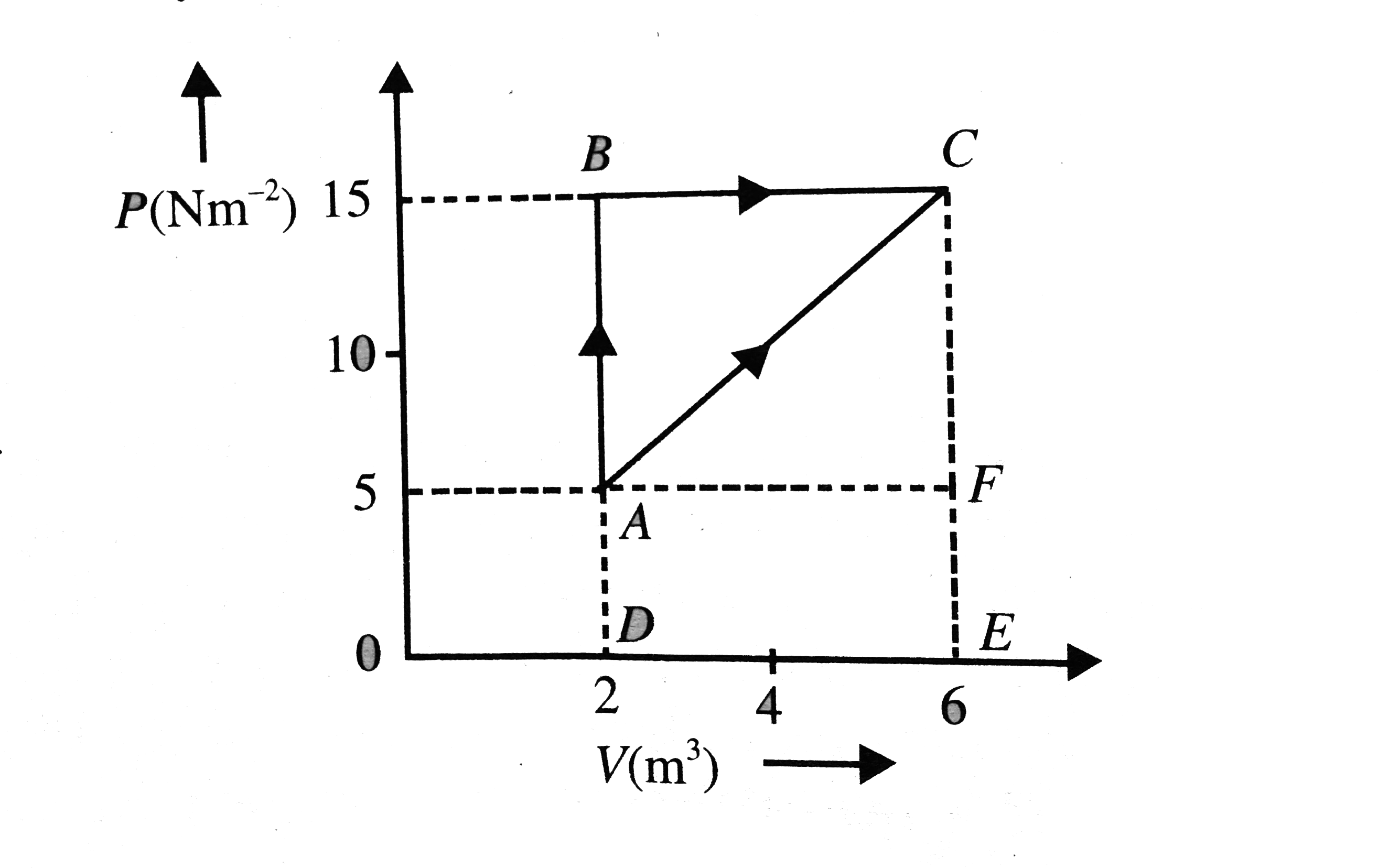 02:14View Solution
02:14View Solution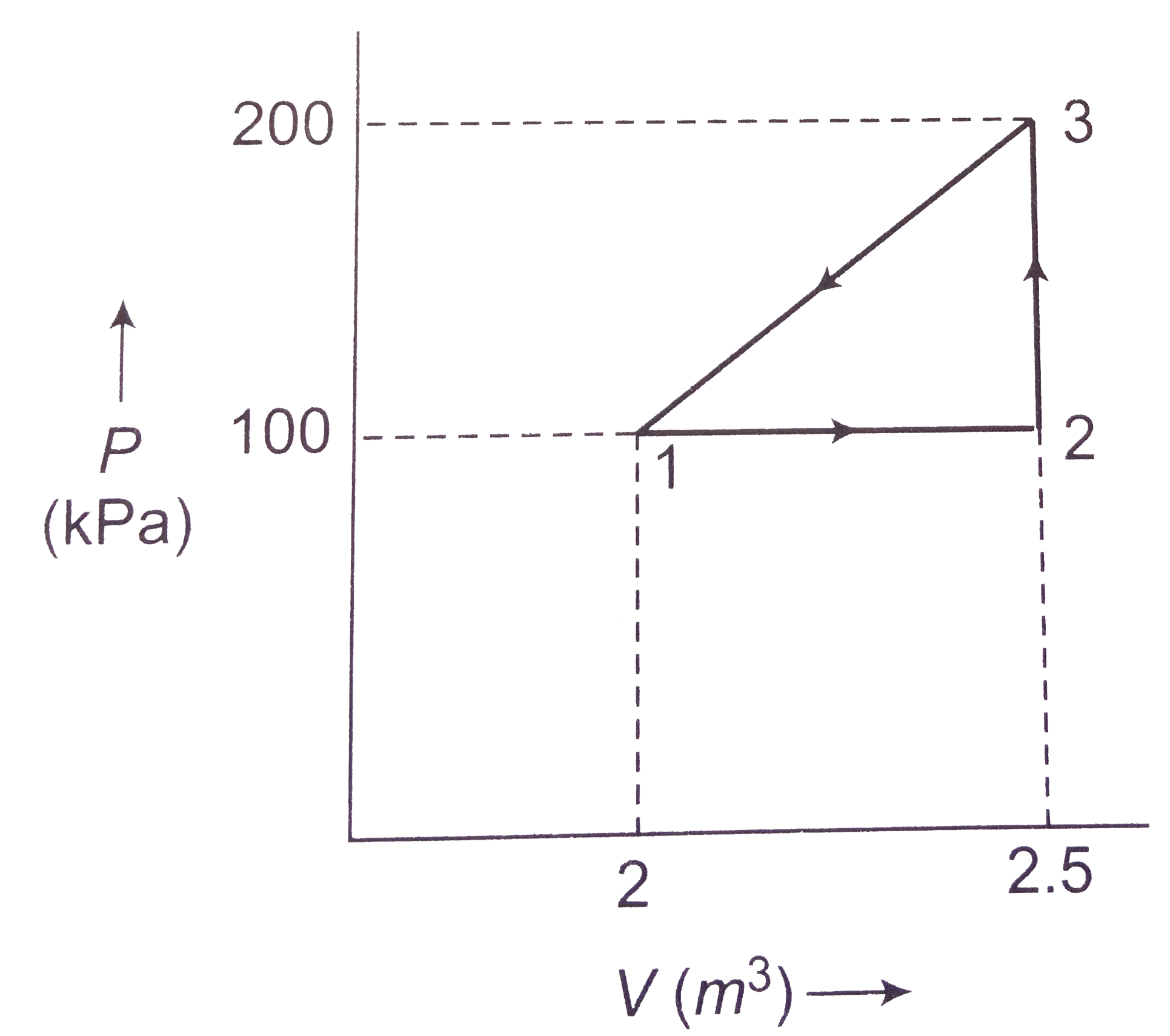
In the figure an ideal gas changes is state from state A to state C by two paths ABC and AC.
(a) Find the path along which the work done is least.
(b) The internal energy of the gas at A is 10 J and the amount of heat supplied to change its state to C through the path AC is 200 J. Calculate the internal energy at C.
(c) The internal energy of the gas at state B is 20 J. Fid the amount of the heat supplied to gas to go from A to B.02:13View SolutionTwo moles of a monoatomic gas are taken from a to c, via three paths abc, ac and adc. Work done by the gas in process ac is
03:30View SolutionIn the given figure an ideal gas changes its state from A to state C by two paths ABC and AC . (i) Find the path along which work done is the least. (ii) The internal energy of gas at A is 10J and amount of heat supplied to change its state to C through the path AC is 200J . Calculate the internal energy at C . (iii) How much is the heat involved in the process ABC and ADC ?
05:04View SolutionIn the given figure, an ideal gas changes its state from state A to state C by two paths ABC and AC.
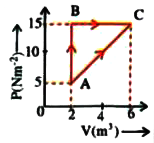
The internal energy of the gas at A is 10 J and amount of heat supplied to change its state to C through the path AC is 2003. Calculate the internal energy at C.02:58View SolutionFigure shows the graph of pressure versus volume of an ideal gas, taken from state A to C via three different paths, i.e., ABC, AC and ADC. The internal energies of the gas corresponding to the states A and C are (P0V0)and(5P0V0) respectively. Determine
The change in internal energy of the gas during the process AC.
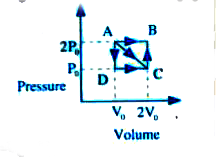 02:42View Solution
02:42View SolutionFigure shows the graph of pressure versus volume of an ideal gas, taken from state A to C via three different paths, i.e., ABC, AC and ADC. The internal energies of the gas corresponding to the states A and C are (P0V0)and(5P0V0) respectively. Determine
The work done during the process DC and AB.
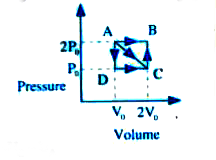 02:37View Solution
02:37View SolutionFigure shows the graph of pressure versus volume of an ideal gas, taken from state A to C via three different paths, i.e., ABC, AC and ADC. The internal energies of the gas corresponding to the states A and C are (P_0 V_0) and (5P_0 V_0) respectively. Determine Equation of the straight line AC.
01:27View Solutionp-V diagram of an ideal gas for a process ABC is as shown in the figure. (a) Find total heat absorbed or released by the gas during the process ABC. (b) Change in internal energy of the gas during the process ABC. (c) Plot pressure versus density graph of the gas for the process ABC.
05:50View Solution

